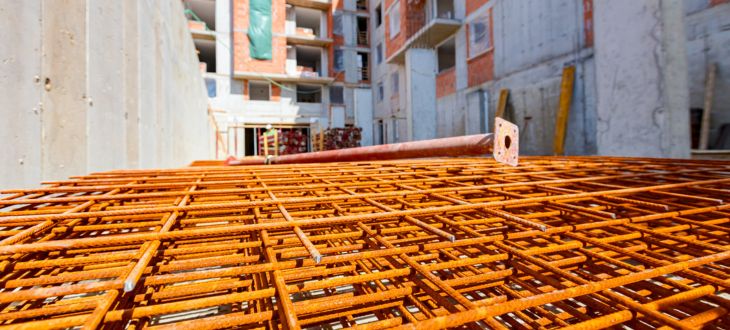The quest for materials that offer better performance, durability, and cost-effectiveness is relentless in the evolving construction world. One such innovation that has been gaining traction is Fiber Reinforced Polymer (FRP), a composite material that has started to replace traditional rebar in various construction applications. This blog post will explore what FRP is, its purpose in construction, and why it often proves to be a superior option to traditional steel rebar.
What Does FRP Stand For?
FRP, or Fiber-Reinforced Polymer, is a composite material of a polymer matrix reinforced with fibers. The polymer can be vinyl ester, epoxy, or polyester, while the fibers are typically carbon, glass, or aramid. This combination creates a lightweight yet extremely strong and durable material.
Types of FRP in Construction
There are many types of FRP used for construction. They include the following:
- Glass Fiber Reinforced Polymer (GFRP): This type consists of a polymer matrix reinforced with glass fibers. It’s the most common type and offers good strength and flexibility.
- Carbon Fiber Reinforced Polymer (CFRP): Known for its stiffness and high tensile strength, CFRP is typically used in demanding structural applications.
- Aramid Fiber Reinforced Polymer (AFRP): Noted for its excellent resistance to impact and fatigue.
The Purpose of FRP in Construction
FRP is primarily used to enhance the structural integrity of buildings and infrastructure. It serves various purposes in construction:
- Reinforcement in Concrete Structures: FRP rebars are used as a substitute for steel rebar in reinforced concrete, particularly in corrosive environments where steel tends to degrade.
- Seismic Retrofitting: Adding FRP materials to existing structures improves their resistance to seismic activity.
- Repair and Strengthening: FRP wraps and sheets are applied to damaged or weakened concrete elements to restore and increase their load-bearing capacity.
Why FRP Is Better Than Regular Rebar
The shift from traditional steel rebar to FRP in many construction projects is due to several significant advantages:
Corrosion Resistance
- Longevity: Unlike steel, FRP does not rust or corrode, which is particularly beneficial in harsh or marine environments.
- Maintenance Costs: Reduced maintenance needs translate into long-term cost savings for building maintenance.
High Strength-to-Weight Ratio
- Lightweight: FRP is lighter than steel, which means easier handling and lower transportation costs.
- High Strength: Despite its lightweight, FRP offers superior tensile strength, which is crucial for structural applications.
Flexibility and Versatility
- Adaptability: FRP can be molded into various shapes and sizes for complex construction forms.
- Thermal Conductivity: FRP has low thermal conductivity, which helps in the thermal insulation of buildings.
Durability
- Minimal Deterioration: FRP retains its structural properties over time better than steel, reducing the need for replacements.
- Chemical Resistance: It withstands various chemicals, making it ideal for industrial or chemical exposure environments.
Frequently Asked Questions About FRP in Construction
Is FRP environmentally friendly?
FRP is considered more environmentally friendly than many traditional materials due to its longevity and the reduced need for frequent replacements or repairs.
Can FRP be used in all types of construction projects?
While FRP is versatile, its use is most beneficial in environments where corrosion resistance is needed or where lightweight materials are preferred.
How does the cost of FRP compare to steel rebar?
Initially, FRP can be more expensive than steel rebar. However, the total cost of ownership over time, including maintenance and durability, often makes FRP a more cost-effective option.
Is FRP as strong as steel?
Yes, FRP can be more robust in many cases than steel, especially in terms of tensile strength, though it generally has less flexibility under load.
Fiber Reinforced Polymer (FRP) represents a significant advancement in construction materials, offering benefits that traditional materials cannot match. With its superior durability, strength, and versatility, FRP is increasingly becoming a preferred choice for modern construction projects, particularly those requiring enhanced longevity and minimal maintenance. As the industry continues to evolve, the adoption of FRP is expected to grow, reflecting its status as an intelligent investment in the future of construction. Whether you are a builder, architect, or engineer, understanding and utilizing FRP can lead to more efficient, sustainable, cost-effective construction practices.
Visit Tampa Steel & Supply for Quality Metal and Metal Processing Services
Do you need help with metalworking and keeping your metal fresh? The experienced professionals at Tampa Steel & Supply are here to help. We provide the highest quality of services to our customers.
Request a Quote Online
Or Call Tampa Steel & Supply at (813) 241-2801

